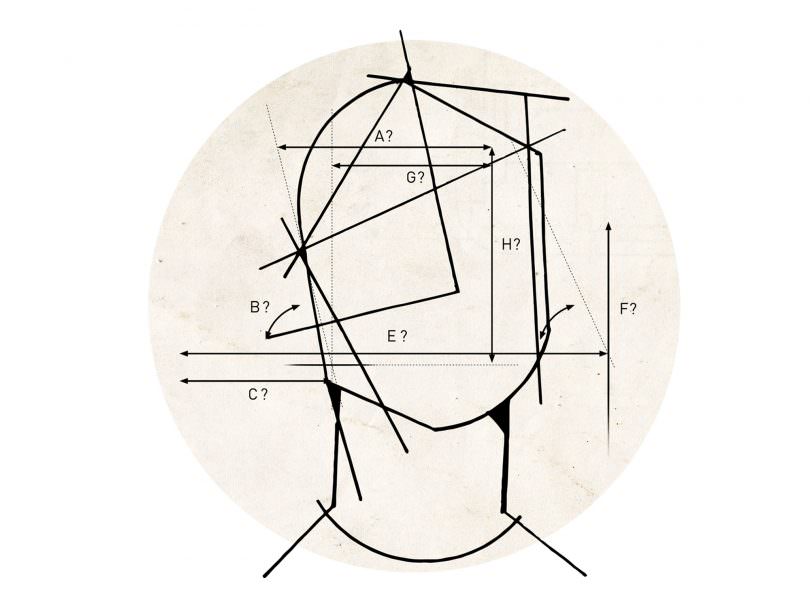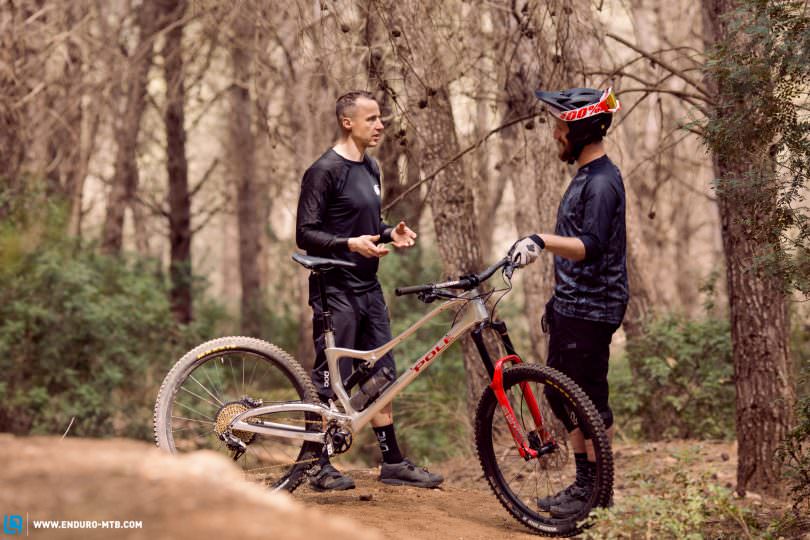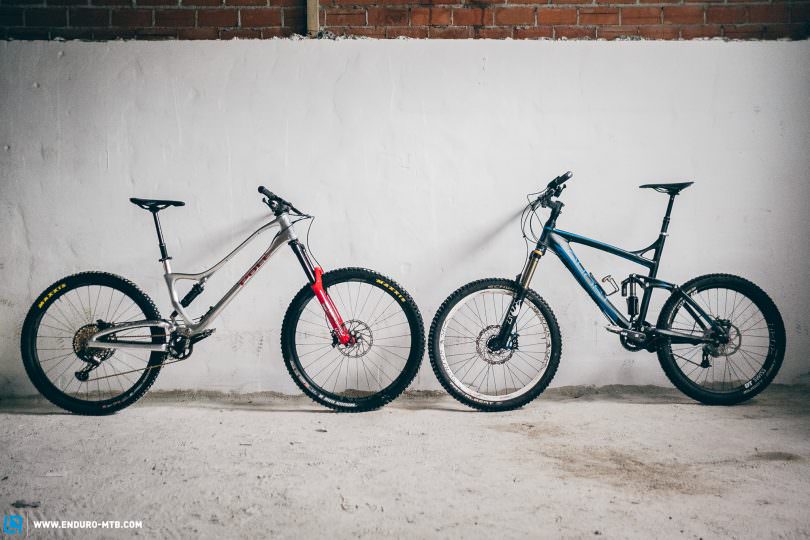The Great Confusion: Why geometry tables don’t help
The more I work with geometry tables, the more I have to think of Socrates’ famous sentence: “I know, that I don’t know.” Every new insight automatically raises at least two new questions. Which leads me to the quandary: wouldn’t it be better not to use geometry tables?
When buying your last car, did you compare wheelbases, think about the camber of the wheels or analyse the weight distribution? Unlikely. So why do we bother when buying a bike? What do we hope to gain? Can you actually feel it when the head tube angle is half a degree steeper or slacker? Or do other factors have a much more significant influence on handling?

What does a geometry table actually contain?
For many, the geometry table is something like the mountain biker’s bible. In it, we seek answers and hope for enlightenment. It’s a fact, the geometry table contains countless details on the parameters of a bike: the head tube angle, top tube length, wheelbase, chainstay length, BB drop and much more. But what insights can you glean from these individual values? The new geometry data values ‘reach’ and ‘stack’, as presented by Transition and Turner in 2008 at least provide a rough indication of how the rider is positioned on the bike on descents, how long the front triangle is and where the handlebar is located. However, they don’t nearly reveal how the bike rides downhill. And there is a lot more data besides that doesn’t say anything on its own.

What the geometry table doesn’t tell us
Although you can find information about the top tube length in the geometry table, this doesn’t usually tell you what the saddle position is like when the dropper is fully extended. The reason: most seat tubes are curved backwards and are significantly slacker than the effective seat tube angle (this is measured at the height of the head tube) suggests. What this means is that as the seat post extends, the saddle moves back over the rear wheel at the angle of the curve in the seat tube and not the effective seat tube angle on the geometry table. To find out how much the seat tube angle changes, we compared the angles at the height of the head tube and the height of the saddle with the seat post extended to 75 cm (measured from the centre of bottom bracket to the centre of the saddle rail) on the bikes of our latest group test. The result: the seat angle slackens by up to 1.3°, depending on the bike design. But wait, there’s more: by shifting the saddle on its rails, the seat tube angle can change by up to 2°.
The individual factors influence each other
“Wow, this bike looks really awesome, but the head angle is 0.5° too steep!” You’ll read sentences like this in the comments section of new bike releases all the time. But reducing a bike’s handling to individual geometric data is fundamentally wrong. The geometric factors are interdependent and influence one another. The stability of a bike is determined not by a slack head angle alone, but also by factors such as the height of the bottom bracket, the length of the front triangle, the chainstays or the trail of the fork. The suspension is critical too.

For many years, short chainstays were all the rage. Today we know that shorter isn’t necessarily better. The key word is balance. If the rear end is too short, the rider will have to work a lot more to keep the front wheel weighted and in control.
The most accurate values are useless if they’re misunderstood
Geometric data are least meaningful when they’re misinterpreted. For example, the reach on a mountain bike tells us nothing about the seated position of the rider. On a bike with an extremely long reach (e.g. Pole MACHINE Reach 510 mm in L) as well as a steep seat tube angle (79°) you’ll sit a lot more upright and closer to the bar than on a bike with a short reach but a slack seat tube angle.
Reach has nothing to do with how you’re sat on the bike when climbing!

Bikes are dynamic, so what’s the point of static data?
Another reason why geometric data has little significance is that it refers only to a static mountain bike. Especially on full-suspension bikes, however, the rear suspension has enormous effects on the geometry. If, for example, a bike has a rear linkage with a lot of anti-squat where the chain tension pulls the linkage in the opposite direction of the rider’s weight, the seat tube angle will remain steeper on climbs than on a bike with less anti-squat that runs deeper into the travel. On descending, the influence of the suspension is even greater. A good rear end sensitively filters out bumps without letting the rider’s input go to waste. However, if the rear end isn’t plush enough, it won’t be as smooth and composed. If it’s too plush, it’ll lose its agility. You won’t, however, find this information on a geometry table.

Bye-bye, geometry table!
We should stop searching for truths in geometry tables. You’re not likely to find them there. If I believed geometry tables and the associated prejudices about individual values, some bikes that I‘ve recently tested should have been unrideable. But often the exact opposite was the case. Creating complex tables of geometric data does not serve riders. On the contrary, they only cause unnecessary confusion. The purchase of your future bike should never depend on numbers on a piece of paper or a screen. To find out how a bike rides, you need to look at the big picture, not at individual figures. And for that, only credible reviews and an extensive test ride will help.
Words: Christoph Bayer Photos: Christoph Bayer, Toni Rutanen Illustration: Julian Lemme
Did you enjoy this article? If so, we would be stoked if you decide to support us with a monthly contribution. By becoming a supporter of ENDURO, you will help secure a sustainable future for high-quality mountain bike journalism. Click here to learn more.








